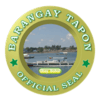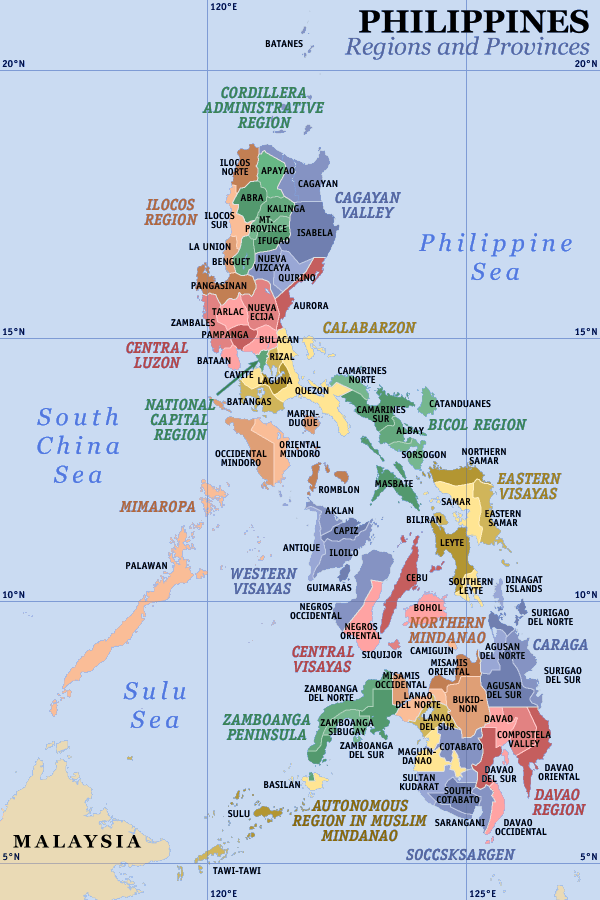Tapon
| Tapon | ||
|---|---|---|
| Barangay | ||
| ||
| Coordinates: 10°03′55″N 124°27′33″E / 10.0653°N 124.4592°ECoordinates: 10°03′55″N 124°27′33″E / 10.0653°N 124.4592°E | ||
| Country | Philippines | |
| Region | Central Visayas Region VII | |
| Province | Bohol | |
| District | 2nd District of Bohol | |
| Municipality | Ubay | |
| Urban District | V | |
| Established | 29 June 1968 | |
| Purok | 7 | |
| Government | ||
| • Type | Sangguniang Barangay | |
| • Brgy Captain | Vicente Gudito | |
| • Brgy Council |
Kagawads
| |
| Area | ||
| • Total | 153 ha (378 acres) | |
| Population (2010)[1] | ||
| • Total | 2,481 | |
| • Density | 1,600/km2 (4,200/sq mi) | |
| • Voters (2013)[2] | 1,682 | |
| Time zone | PST (UTC+8) | |
| ZIP code | 6315 | |
| IDD : | +63 (0)38 | |
| PSGC | 071246046 | |
Tapon is one of the 44 barangays of the municipality of Ubay, in the province of Bohol, Philippines.
The total land area is 153 hectares (380 acres).[3] According to the 2010 census, it has a population of 2,481. In the last election, it had 1,682 registered voters, meaning that 68% of the population are aged 18 and over.[2] It is generally believed that fewer than half its inhabitants were born in Tapon.
Tapon celebrates its annual fiesta on 29 June in honor of their patron saint, Saint Peter.
History
Formerly Tapon was a sitio of Poblacion. Its principle use was grazing for goats – the sitio was called "Canding", which means goat in Visayan language.
In 1968 it became a separate barangay. Early officials passed a resolution to change its name and the name chosen was Tapon, which means to cross in Visayan, because of the wooden hanging bridge between the barangay and the town centre.
In the same year (1968), the first school building was erected, followed by the construction of the chapel, inuagurated on June 29, 1968, the date of the fiesta.[4]
Location
Tapon overlooks Camotes Sea to the north. It is bounded to the south by Casate, to the east by Poblacion and to the west by Achila and Camambugan.
Government
Despite its small size, the barangay is divided into west and east, with Tapon river as the dividing line.
East Tapon is plain, and here are located:
- public offices – barangay hall, day care, sports and health centers
- residences
- Tapon Elementary School, the only school in the barangay
- the chapel
- police outpost
West Tapon, the larger portion of the barangay, is rolling land with large agricultural lots. There are two beaches, Balong and Henson beach which offer tourist facilities. A large portion of West Tapon covers sandy beach suitable for family picnics and small group gatherings.
There are seven puroks overseen by the elected kagawads.
Economy
The population lives mostly from fishing, trading and small agriculture. Some are tricycle and pedicab drivers who deliver goods and ferry commuters.[5]
Popular products in this place are dried or fresh fish. Tapon also has a thriving crab processing plant which produces sea products for exports. Some people also sell peanut products, and produce and repair fishing nets and other fishing equipment.
References
- ↑ "Total Population by Province, City, Municipality and Barangay: as of May 1, 2010" (PDF). 2010 Census of Population and Housing. National Statistics Office. Retrieved 1 April 2013.
- ↑ 2.0 2.1 Project of Precincts for the 2013 Barangay Elections
- ↑ Saz, Efren B. (April 2007). "A Comprehensive Assessment of the Agricultural Extension System in the Philippines: Case Study of LGU Extension in Ubay, Bohol" (PDF). Philippine Institute for Development Studies. Retrieved March 14, 2015.
- ↑ Henson, Concepcion (October 1990). "The Province of Bohol". Ubay Past and Present (The Bohol Provincial Library) 47: 61.
- ↑ Ubay, Bohol, Philippines, 6315 (September 19, 2008). "Barangay Tapon". Ubay LGU. Retrieved October 10, 2011.
External links
 |
Camotes Sea |  | ||
| Achila | |
Poblacion | ||
| ||||
| | ||||
| Camambugan | Casate |
| ||||||||||||||||||||||||||||||||||
| ||||||||||||||||||||||||||||||||||


